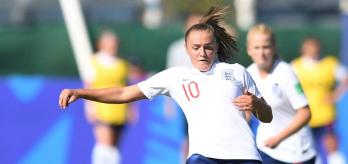It may sound strange for a Premier League coach to be concerned about the threat of the opposition when his own team are in such a promising attacking position, but Howe had done his homework.
Having analysed many matches against top-class teams with pace and quality in abundance, such as Manchester City, Liverpool, Leicester City and Chelsea, he had seen a growing trend of goals conceded on the counter-attack from corners and key attacking positions. All four teams were renowned for the speed at which they could turn defence into attack, with lightning-quick breaks exploiting gaps left by wandering defenders – particularly late on in matches when fatigue had set in.
What is a counter-attack?
A counter-attack is when a team regains possession and immediately attacks the opposition with both speed and intensity. It is all about being direct and exploiting the spaces behind the defensive line.
It can be broken down into four key phases:
- Regaining possession
- Bringing the ball forward at pace
- Intelligent off-the-ball movement
- High intensity and a high-quality final ball
In terms of chronology, the second and third points often happen simultaneously. It is all about the speed of thought of the player who regains possession and the instinctive running of their team-mates further up the pitch who immediately sense the opportunity. Few football moves are better to watch than a swift counter-attack resulting in a goal.
Arguably, the finest exponents of the counter-attack in the modern international game are Belgium, who possess a wealth of world-class ball carriers including Eden Hazard and Kevin De Bruyne. Combined with Romelu Lukaku's electric pace and dribbling skills in attack, this makes the Red Devils incredibly difficult to defend against after a turnover in possession.
Regaining possession
A turnover in possession can present itself in many different ways. Whether it is from a poor pass from an opposing player, a good tackle, an interception or a successful clearance, the turnover is always where the breakaway begins.
For an effective counter-attack, the idea is for the team to regain the ball as high up the pitch as possible, using the momentum of a turnover in possession to counter and score.
From the moment the team gains control of the ball, every player in front of the player in possession must be on the front foot. From the ball-carrying midfielders’ speed and decisiveness to the forwards providing options both in front of and behind the defensive line, it is all about moving with intensity.
Bringing the ball forward at pace
From the moment when the ball is recovered, it needs to be moved forward with pace and purpose, either through a ball carrier or through a direct pass. Sometimes, this means the first player to recover the ball will look for the team's strongest ball carrier with the initial pass. Whether it is through a succession of quick passes or with a direct one, the key is to move forward with speed and directness both on and off the ball.
While the turnover and initial pass might be important, the counter will not succeed without the immediate desire and willingness of the midfield and attack to offer options and support – even if some players never touch the ball themselves. The most important players in the counter are often the wide attackers because they can stretch the opposition. They need to be direct and to run at pace to exploit the space.
If the intensity of the passing and the running is high, the opposition players are forced to turn to try to deal with passes through or over them, which makes it incredibly challenging to defend against.
Intelligent off-the-ball movement
The difference between a successful and an unsuccessful counter-attack can all come down to the accuracy of the pass and the intelligence of the runs which are made because the runs dictate the play. It often only takes one intelligent run to open up the whole pitch for a team.
There are usually two choices: (a) do they have the space to attack in behind, or (b) do(es) the player(s) without the ball on the attacking side need to be used as a platform to link the game up? Eventually, somebody will need to attack the space behind the defensive line, but the evolution of the attack is often based on the runners’ ability to see the free space.
High intensity and a high-quality final ball
While the intensity of the runs needs to be high, so does the quality of the pass. The idea of a run is to stretch the opposition, but a telling pass will take it one step further and hurt the opposition, which can often lead to an excellent goalscoring opportunity.
A high-quality pass will often take two or three defenders out of the game and leave the forward in a threatening position.
Summary
Teams must try to regain the ball as high up the pitch as possible. For a successful counter, a key element is the players' desire to get forward to stretch the opposition, with the wide players playing a pivotal role. The ball should be moved forward with as few touches as possible, and it needs to be moved at pace, preferably into space to exploit the opposition, either in the gaps in front of the defence or in the space behind the defensive line. If all of these elements are incorporated into the attack and the final ball is accurate and well timed, the counter will often lead to a good goalscoring opportunity.

























